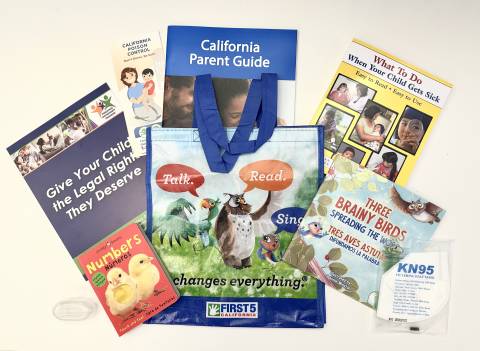Your child giggles while they stack blocks higher, higher, higher. All of a sudden, the blocks come tumbling down. Those squeals of happiness quickly turn into tears, and your child throws the blocks across the room. Does this sound familiar? As caregivers, we’ve all seen our young children let out their big emotions through tantrums and tears. But by helping them better understand their emotions, we can make it easier for them to express themselves through words.

Young children don’t have much experience communicating about their emotions—they’re still learning about themselves and the world around them! When they experience emotions like frustration, sadness, anger, fear, worry, excitedness, and more, they don’t yet have the words to tell you this is how they’re feeling. Instead, they often act out their feelings in physical ways through facial expressions, body movements, and behavior.
When you teach your children to name their emotions, it can make it easier for them to understand what they’re feeling and communicate those feelings to you. When children learn about emotions at a young age, they gain emotional intelligence, or the ability to recognize, understand, and manage their emotions. Having emotional intelligence can help children bounce back from stressful or difficult situations more easily, which is called resilience. Children with high emotional intelligence and resilience tend to develop stronger relationships with friends and family and have increased self-confidence.
A great way to start teaching your child about emotions is to play The Name Game. To play, name emotions whenever you see them. Whether it’s an emotion your child is experiencing, or you notice a character in a book or TV show expressing a strong emotion, take the opportunity to put a name to what they’re feeling. For example, “Zuma is so happy he rescued that pup from the ocean!” Next time you watch Paw Patrol, ask your child to name what the pups are feeling.
You can also download our free ROAR coloring and activity book. It helps children explore different big emotions like anger, sadness, frustration, scared, and more through the experience of a dragon named Roar. Then it teaches them a breathing technique that can help them find calm when they’re feeling those big emotions.
You can also try creating your own emotion flashcards or emotions wheel. Some caregivers find that being able to show pictures of what different emotions look like can help their child better identify them. The movie Inside Out is a great source of kid-friendly emotions through their characters Joy, Sadness, Fear, Anger, and Disgust. You and your child can even take your own pictures of what different emotions look like.
There are also games online that you can play with your child, like the Daniel Tiger feeling game. Daniel and his friends make facial expressions for different emotions and ask the viewer to guess what emotion they’re feeling. You can also play this game with your child by acting out different emotions for them to guess.
There are so many opportunities each day to talk to your child about their emotions, and consistently reminding them to name their emotions is important in helping them remember. Encouraging them to share their feelings will help build their emotional intelligence and resilience. Read more about ways you can encourage your child to express their emotions in a healthy way.








